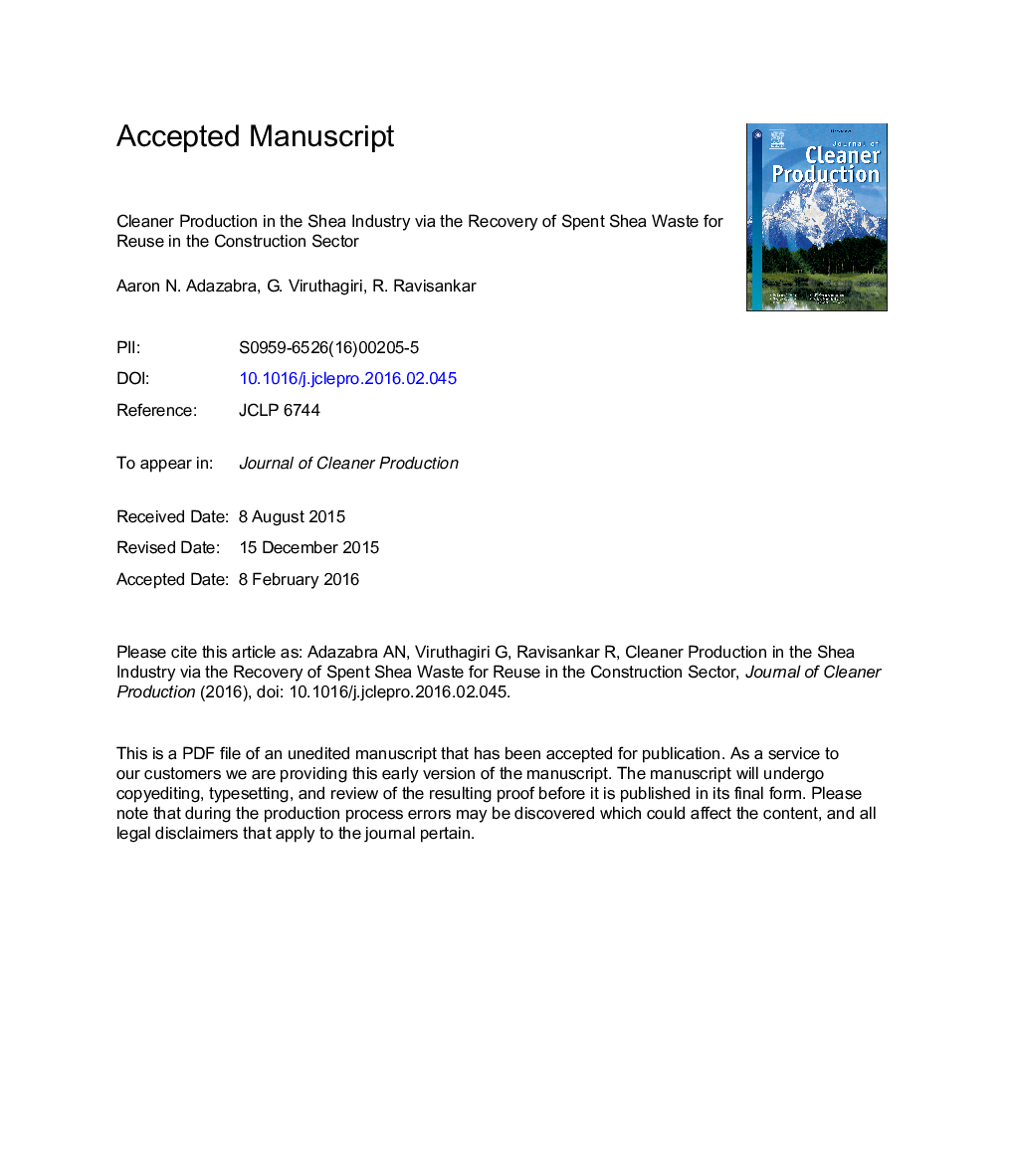| Article ID | Journal | Published Year | Pages | File Type |
|---|---|---|---|---|
| 8102437 | Journal of Cleaner Production | 2016 | 25 Pages |
Abstract
The Shea industry is catching major international attention in recent times because of its socioeconomic value, tremendous potential of ensuring food security as well as its wide-ranging industrial applications. The increased demand for the Shea butter product, which has led to the commercialization of various Shea butter extractive plants without appropriate mechanisms of dealing with the massive spent Shea waste generated, has necessitated the current investigation. Instrumental methods were used to study the suitability of recovering spent Shea waste for reuse in the construction sector towards a cleaner industrial production. The X-rays fluorescence analysis of this waste shows K (2.11 wt.%), Al (0.37 wt.%), Ca (0.36 wt.%), Si (0.35 wt.%) and Mg (0.10 wt.%) as key replacement cations at appreciable levels and a good diversity of inorganic fluxes at trace levels. Infrared and ultimate analyses of spent Shea waste revealed a largely organic materials with well-defined organic functional group bands at 3369 cmâ1 2924 cmâ1, 2856 cmâ1, 1741 cmâ1, 1616 cmâ1, 1452 cmâ1, 1369 cmâ1, 1033 cmâ1, 756 cmâ1 and 640 cmâ1. Its pore forming ability was demonstrated via the 76 wt.% reduction in weight at 800 °C firing temperature. The broad differential thermal analysis exothermic peak and the estimated higher heating value of 19.55 MJ/kg shows an excellent biofuel waste. X-ray diffraction and scanning electron microscopy studies revealed the varying flower-like polycrystalline microstructures of this waste. The various characterization studies portrayed spent Shea waste as suitable materials for reuse in improving clay brick making economically. Consequently, the implementation of mechanisms for the widespread reusing of spent Shea waste material towards a cleaner production in the Shea industry is highly recommended.
Keywords
Related Topics
Physical Sciences and Engineering
Energy
Renewable Energy, Sustainability and the Environment
Authors
Aaron N. Adazabra, G. Viruthagiri, R. Ravisankar,
